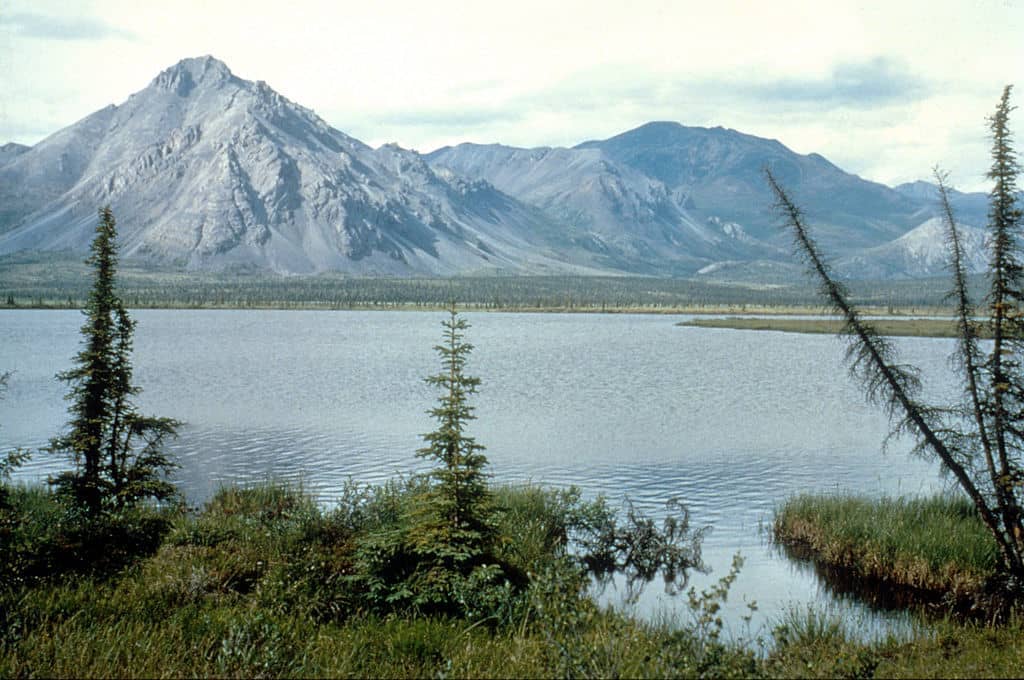It’s climate panic again. This time, under headlines such as ‘Baked Alaska’, we are informed that the most northerly US state has experienced ‘absurd’ temperatures for December. ‘In December when temperatures would normally be well below zero,’ states the Independent, the town of Kodiak has registered a temperature of 67 degrees Fahrenheit (19.4 Celsius).
‘In late December I would not have thought such a thing possible,’ a climatologist is quoted as saying on CNN. ‘When smashing a temperature record it’s normally by a fraction of a degree,’ tweets the Met Office, ‘not by 20 degrees. But that is what happened in Kodiak, Alaska.’ The subtext, as ever, is that this is yet more evidence of what some newspapers and TV stations have taken to calling ‘climate breakdown’.
Alaska is no stranger to wild swings in temperature
Or maybe not. The temperature recorded at Kodiak on Sunday was unusually high but it is untrue to say that temperatures in this location would normally be well below freezing at this time of year. The town of Kodiak sits on an eponymous island off the southern coast of Alaska under the moderating influence of the Pacific Ocean and its climate is therefore in no way representative of that of the interior of Alaska — most of which indeed is usually frozen in December. In fact it is relatively rare in Kodiak for the temperature not to rise above freezing in December — in December 2020, for example, it happened on only three days.
That hasn’t changed much over the years, either — in December 1932, right at the beginning of the town’s climate records, it happened on only two days.
Moreover, Kodiak sits at the northern end of its island just to the north east of a 3,000 foot range of hills and is thus primely placed for a phenomenon known as the Foehn effect. This is when a moist wind drawing warm air from southerly latitudes blows over high ground, shedding its moisture on the way. The air then descends to sea level, warming up as it does so. Because it is now drier, it can reach impressively high temperatures. It is the same phenomenon which often gives towns on the North Wales coast the highest temperatures recorded in Britain in winter.
On Boxing day, Kodiak was in a strong south westerly airflow, with conditions perfect for the Foehn effect — which is why temperatures suddenly soared by 20 degrees Fahrenheit in the space of half an hour. It was an acute case of microclimate. But to say that it broke records to the tune of 20 degrees Fahrenheit, as the Met Office asserts, is somewhat misleading. That was just the margin by which it beat the record for 26 December. Moreover, 67 degrees Fahrenheit was recorded at a tidal station, out at sea. More relevant was the 65 degrees Fahrenheit recorded at Kodiak Airport, which can be compared with records going back to 1931. The previous highest for December was 56 degrees Fahrenheit on 22 December back in 1984 — which it broke by 9 degrees Fahrenheit (5 Celsius), not by 20 degrees.
But this is just for one location. Alaska is no stranger to wild swings in temperature. In Fairbanks, deep in the interior of Alaska which really is usually below freezing throughout December, the temperature reached 58 degrees Fahrenheit on 5 December 1934. That was far more dramatic in its own way — but happened long before the world became obsessed with climate change. The highest recorded in Fairbanks in the month’s warm spell is 41 degrees Fahrenheit on 26 December.
None of this means that there isn’t a general upwards trend in temperatures in Alaska — the state is gently warming along with most of the Earth’s surface. But no, this week’s freak temperatures are not a sign of climatic Armageddon.







Comments